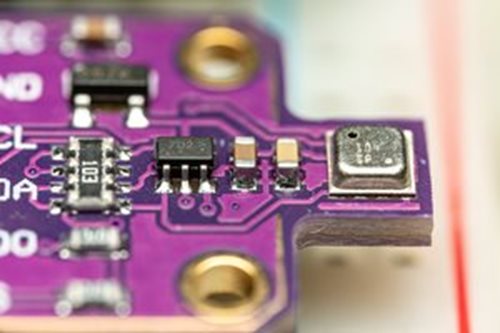Ask us about
test equipment solutions for your industry
What is MEMS Technology? A Comprehensive Guide
In today’s world, people have developed intricate ways for technology to not only interact with people, but their surrounding environment as well. An example of this is self-driving cars, which are not only capable of sensing their surroundings, but also responding to what they sense, whether that is a person, another car, a traffic light, etc.
 The key to communication between technology and its surrounding environment is MEMS sensors. Keep reading this blog to learn more about what MEMS sensors are and why MEMS sensor testing is so important for a plethora of major industries.
The key to communication between technology and its surrounding environment is MEMS sensors. Keep reading this blog to learn more about what MEMS sensors are and why MEMS sensor testing is so important for a plethora of major industries.
You can think of MEMS sensors as a translator between you and your device. Say you want to open up an app. You would convey this by tapping on the app you want to open. The microelectronic parts of the MEMS sensor would sense your tap, process it, and deliver that information to the mechanical parts of the sensor. The mechanical components take that electronic message and perform the desired action, i.e. opening the app.
You would convey this by tapping on the app you want to open. The microelectronic parts of the MEMS sensor would sense your tap, process it, and deliver that information to the mechanical parts of the sensor. The mechanical components take that electronic message and perform the desired action, i.e. opening the app.
The simplest way a user can perform MEMS sensor testing is to apply a precisely-controlled force on the MEMS structure to measure its resulting deflection. This is typically done by a machine that can press each tiny sensor with a consistent level of force to ensure they all respond with the necessary amount of deflection.
Another way these sensors can be tested is by applying an actuation voltage to the MEMS structure. An actuation voltage is a specified voltage that is meant to trigger a specific mechanical response. Think about when you open an app on your phone by pressing its associated icon. If you were testing the MEMS sensor, the actuation voltage would mimic the electronic message it would have gotten from your finger press to see if the mechanical portion would open the app. Users can then test the electrical output signals released from the mechanical portion’s applied force or deflection.
Automation
MEMS pressure sensors are commonly used in automation, monitoring the pressure in closed systems such as tanks or pipelines. In particular for military-grade machinery, it is important to have a way to measure the effects of the environment on machinery such as tanks to help it endure a variety of locations and situations. Additionally, MEMS accelerometers can be used to measure acceleration, tilt, and movement to provide motion detection and stability control capabilities.
Aerospace
The Aerospace industry often also uses MEMS accelerometers to measure a vehicle’s movement capabilities. MEMS gyroscopes are also pivotal for aerospace machinery to measure angular velocity and provide precise orientation. Think about fighter pilots flying at fast rates while also constantly changing the jet’s angle as they change direction. MEMS sensors are pivotal for helping orient those pilots and measuring data related to their flight.
Medical
As the medical industry has shifted towards non-invasive healthcare devices, MEMS sensors have seen a massive boom. These sensors can read LED and laser lights of specified wavelengths to detect changes in skin tissue. They can also detect abnormal levels of CO2 in the air. More examples of devices that use MEMS equipment in the medical industry include blood pressure meters, MEMS flow sensors used for asthma examinations, MEMS microphones to check people’s heartbeats, etc.
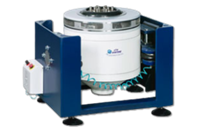
ETS Solutions L620M
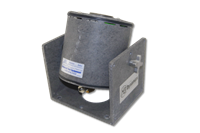.png?lang=en-US&width=150&height=132)
MB Dynamics PM250HP 250 lbf Shaker, DC - 3500 Hz
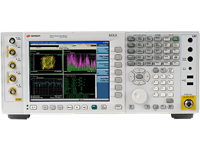
Keysight N9020A MXA Signal Analyzer
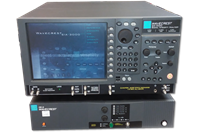
Wavecrest SIA 3000 Signal Integrity Analyzer
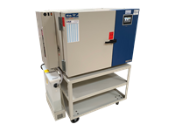
Cincinnati Sub-Zero MCBH-1.2 MicroClimate Benchtop Test Chamber
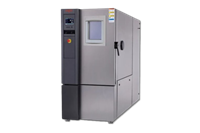.png?lang=en-US&width=175&height=116)
Espec EGNX12-6NWL Global-N Chamber
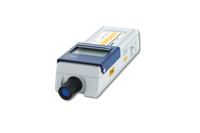
Polytec VibroGo Laser Vibrometer
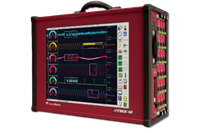
AstroNova TMX-18 Portable Data Recorder (Astro-Med)
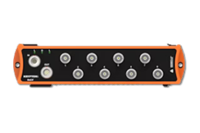.png?lang=en-US&width=175&height=116)
Dewesoft Krypton 8XLV DAQ System
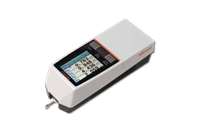
Mitutoyo SJ-210 Portable Profilometer
To learn more about products that can help you with MEMS testing, reach out to ATEC today to rent from our extensive list of test equipment.
 The key to communication between technology and its surrounding environment is MEMS sensors. Keep reading this blog to learn more about what MEMS sensors are and why MEMS sensor testing is so important for a plethora of major industries.
The key to communication between technology and its surrounding environment is MEMS sensors. Keep reading this blog to learn more about what MEMS sensors are and why MEMS sensor testing is so important for a plethora of major industries.What Are MEMS Sensors?
MEMS sensors, or Micro-Electro-Mechanical System sensors, are small devices, typically only a few millimeters long, that process physical information and turn it into usable data for the device to process and respond to. These sensors can be broken down into two components, electronic and mechanical, to perceive and process data provided by physical feedback. While applications for these sensors are almost endless, the easiest way to contextualize the value of these devices is through your smartphone.You can think of MEMS sensors as a translator between you and your device. Say you want to open up an app.
 You would convey this by tapping on the app you want to open. The microelectronic parts of the MEMS sensor would sense your tap, process it, and deliver that information to the mechanical parts of the sensor. The mechanical components take that electronic message and perform the desired action, i.e. opening the app.
You would convey this by tapping on the app you want to open. The microelectronic parts of the MEMS sensor would sense your tap, process it, and deliver that information to the mechanical parts of the sensor. The mechanical components take that electronic message and perform the desired action, i.e. opening the app.What is MEMS Sensor Testing?
As we mentioned earlier, MEMS sensors are very small, so testing them by hand would be difficult. Additionally, both the electronic and mechanical components need to be tested to ensure the overall sensor works as intended. These can be tested in a couple of ways.The simplest way a user can perform MEMS sensor testing is to apply a precisely-controlled force on the MEMS structure to measure its resulting deflection. This is typically done by a machine that can press each tiny sensor with a consistent level of force to ensure they all respond with the necessary amount of deflection.
Another way these sensors can be tested is by applying an actuation voltage to the MEMS structure. An actuation voltage is a specified voltage that is meant to trigger a specific mechanical response. Think about when you open an app on your phone by pressing its associated icon. If you were testing the MEMS sensor, the actuation voltage would mimic the electronic message it would have gotten from your finger press to see if the mechanical portion would open the app. Users can then test the electrical output signals released from the mechanical portion’s applied force or deflection.
Where are MEMS Sensors Applicable?
Fundamentally, MEMS sensors are broken down into two sections, sensors and actuators. The electrical components sense an input, whether that is physical pressure, wind speed, temperature shifts, etc., and the mechanical components perform the desired response. Most industries use MEMS sensors to some degree because they can be broadly applied. Here are a few examples of the industries that take full advantage of MEMS sensors.Consumer Electronics
Beyond sensing the pressure your finger puts on a cell phone, another common use for MEMS sensors is microphones. When you say something into a phone, computer, etc. these sensors will pick up the sound waves you create, and turn them into electrical signals that can reproduce your audio clearly. MEMS accelerometers are also common in consumer electronics to sense when you move or tilt your device.Automation

MEMS pressure sensors are commonly used in automation, monitoring the pressure in closed systems such as tanks or pipelines. In particular for military-grade machinery, it is important to have a way to measure the effects of the environment on machinery such as tanks to help it endure a variety of locations and situations. Additionally, MEMS accelerometers can be used to measure acceleration, tilt, and movement to provide motion detection and stability control capabilities.Aerospace

The Aerospace industry often also uses MEMS accelerometers to measure a vehicle’s movement capabilities. MEMS gyroscopes are also pivotal for aerospace machinery to measure angular velocity and provide precise orientation. Think about fighter pilots flying at fast rates while also constantly changing the jet’s angle as they change direction. MEMS sensors are pivotal for helping orient those pilots and measuring data related to their flight.Medical
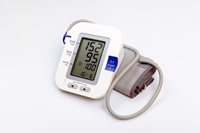
As the medical industry has shifted towards non-invasive healthcare devices, MEMS sensors have seen a massive boom. These sensors can read LED and laser lights of specified wavelengths to detect changes in skin tissue. They can also detect abnormal levels of CO2 in the air. More examples of devices that use MEMS equipment in the medical industry include blood pressure meters, MEMS flow sensors used for asthma examinations, MEMS microphones to check people’s heartbeats, etc.Industrial
MEMS sensors are often used in industrial settings to increase the safety of those working in the industry. Some machinery is designed to use MEMS sensors as gas sensors that will shut machinery down when a person enters a hazardous area. These sensors are also commonly used by complex machinery to sense the surroundings and respond accordingly to prevent collisions with obstacles and workers.How ATEC Can Help You
ATEC rents a variety of solutions that can test MEMS sensors:Vibration Shaker Systems

ETS Solutions L620M
.png?lang=en-US&width=150&height=132)
MB Dynamics PM250HP 250 lbf Shaker, DC - 3500 Hz
Signal Analyzers

Keysight N9020A MXA Signal Analyzer

Wavecrest SIA 3000 Signal Integrity Analyzer
Environmental Chambers

Cincinnati Sub-Zero MCBH-1.2 MicroClimate Benchtop Test Chamber
.png?lang=en-US&width=175&height=116)
Espec EGNX12-6NWL Global-N Chamber
Laser Doppler Vibrometers

Polytec VibroGo Laser Vibrometer
Data Acquisition Systems (DAQ)

AstroNova TMX-18 Portable Data Recorder (Astro-Med)
.png?lang=en-US&width=175&height=116)
Dewesoft Krypton 8XLV DAQ System
Profilometer/SEM

Mitutoyo SJ-210 Portable Profilometer
To learn more about products that can help you with MEMS testing, reach out to ATEC today to rent from our extensive list of test equipment.
Posted August 07, 2025
